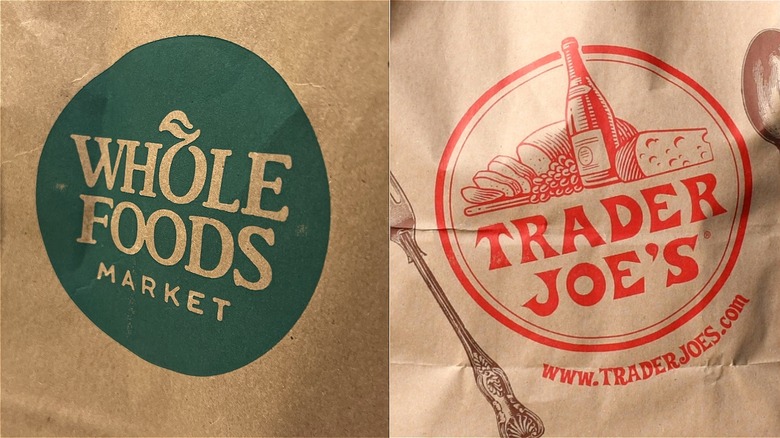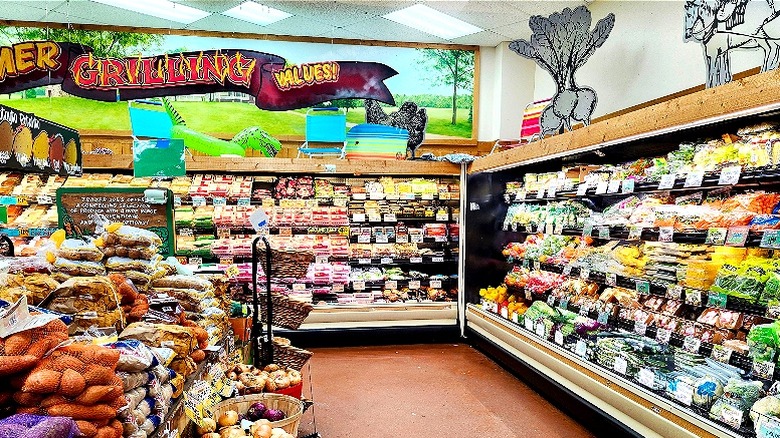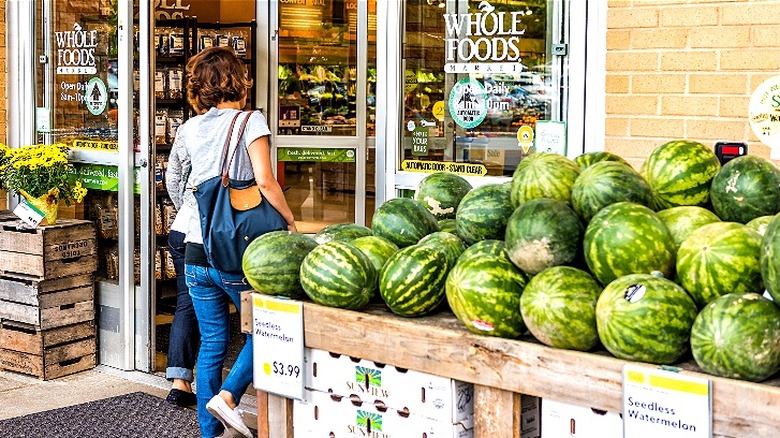Trader Joe's Vs. Whole Foods: Which Grocery Chain Is Cheaper?
A shopping cart full of organic groceries doesn't seem like the most inexpensive food option these days. But two specialty supermarkets have been providing a savings in the mostly organic game for some time now, with polar-opposite reputations. Trader Joe's is widely known for being a poor man's Whole Foods, while Whole Foods is widely known for costing a "Whole Paycheck." (Which isn't really how much of your income you should be spending on groceries.) But are these reputations deserved? And which good-for-you grocer is actually better on your budget?
To note: Despite the fact that both stores have made a name for themselves as leaders in the national natural grocery arena, Trader Joe's and Whole Foods are very different. Trader Joe's website deems the company a "national chain of neighborhood grocery stores," of which there are just under 600 in the United States. About 85% of the products sold at Trader Joe's are store-brand, private-label items. While Whole Foods has its own 365 store brand, the chain also offers a wide variety of name-brand food and merchandise in its just-over 500 stores nationwide.
With that said, comparing the prices of apples and oranges at Whole Foods and Trader Joe's stores would be like, well, comparing apples and oranges. Instead of doing a total price-point comparison, let's compare the type of offerings at each store, overall customer satisfaction as depicted on social media, and the potential for savings when it comes to portion sizes, grocery staples, and specialty goods.
Trader Joe's
Ever since its founding in 1967, Trader Joe's has offered up a value grocery store experience full of healthy offerings and self-proclaimed "unique and interesting" items. Its notoriously small stores (and even smaller parking lots) are often crowded with shoppers stocking up on weekly usuals, as well as more adventurous items, including skin care items and seasonal candles. In a deep-dive by CNET, Trader Joe's was found to be 33% cheaper than local grocery stores.
Trader Joe's offers everyday deals on spices, dumplings, frozen meals and snacks, and cheese. The store's wild-caught red Argentinian shrimp and pre-marinated shawarma chicken thighs both cost under $12, and have inspired cult followings. Part of the TJ's devotion comes from this dedication to cheap-food fun; even though the store mostly sells its own products in fairly small packages, these products' package designs are meant to excite customers. Further, Trader Joe's turns its bulk-buying power into house-brand savings for customers — without charging a fee for access to membership perks like Sam's Club or Costco.
However, also unlike those warehouse clubs, and crucially, unlike Whole Foods, Trader Joe's does not have as stellar a reputation when it comes to produce. For whatever reason, Trader Joe's produce can have a short shelf life. For true steals of deals, it may pay to stick to the frozen section of Trader Joe's, as well as your favorite snacks, special deals, and its floral section. If purchasing produce for same-day preparation, though, Trader Joe's might prove cost-effective compared to Whole Foods.
Whole Foods Market
Whole Foods arrived on the shopping scene in 1980, and quickly built a reputation for being a fine purveyor of organic produce — and a charger of high(er) prices. While some of the chain's expensive stigma simply comes from organic foods costing more to produce than more standardly farmed fare, the company also admitted to overcharging its customers in 2015. However, the chain has been lowering prices since Amazon acquired the company in 2017.
While you may be wary of this possibly being one of the ways Amazon tricks you into spending more money, the partnership with Prime has significantly improved the savings potential for Whole Foods shoppers. Prime members shopping at Whole Foods in store or online can get 10% additional discounts on already marked sale items, as well as score other special discounts and offers. The large chain also approximates neighborhood store-style savings through recurring weekly sales on ready- made food for Prime members. For example, on Tuesdays, its members can get $2 off rotisserie chickens, and Fridays feature a buy-one-get-one special on sushi rolls.
Similar to Trader Joe's, though, even non-Prime members can save at Whole Foods. The store does have regular sales on seasonal produce, for example; plus more typical weekly grocery store sales on meat and seafood, as well as a lineup of less expensive store-brand items in its 365 line. Sometimes, Whole Foods and Trader Joe's are even neck-and-neck with their pricing. So, if both stores are near enough (e.g., in Napa, California, they're located in the same plaza), a visit to each in order to snag key items may provide the healthiest (and the tastiest) savings.


